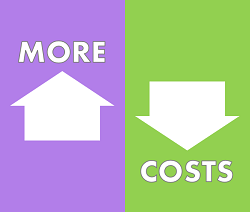More Home for a Lower Cost of Housing
What if you could live in a larger and possibly newer home for less than you are currently? Would you consider moving? Do you want to hear more?
Interest rates, while they’re expected to go up, actually took a small dip and are still hovering at the 4% or below mark for a 30 year mortgage and almost one percent less for a 15 year term.
|
|
Let’s assume that you have a $225,000 mortgage currently at 6% which has a principal and interest payment of $1,348.99. With a 4% rate, you could have a $282,561 mortgage with the same payment. A $57,000 more expensive home could help you get what you need most such as more square footage or a different location or a newer home.
If you’re going to be making that payment for years to come, why not allow lower interest rates to help you get the features you want without having to necessarily pay a higher payment. Taking that logic a little bit further, let’s see how utilities can make a difference too.
A newer home could easily have lower monthly utility costs than your current home due to being more energy efficient. Construction materials, windows, doors, insulation, modern HVAC systems and energy efficient appliances all contribute to lower utility costs. A new home with these advantages could easily save a homeowner up to 25-50% on utilities for the same size home.
The concept is simple: get the most home you can for the amount you spend on the payment and utilities. It will take some investigation and your real estate professional can help.







